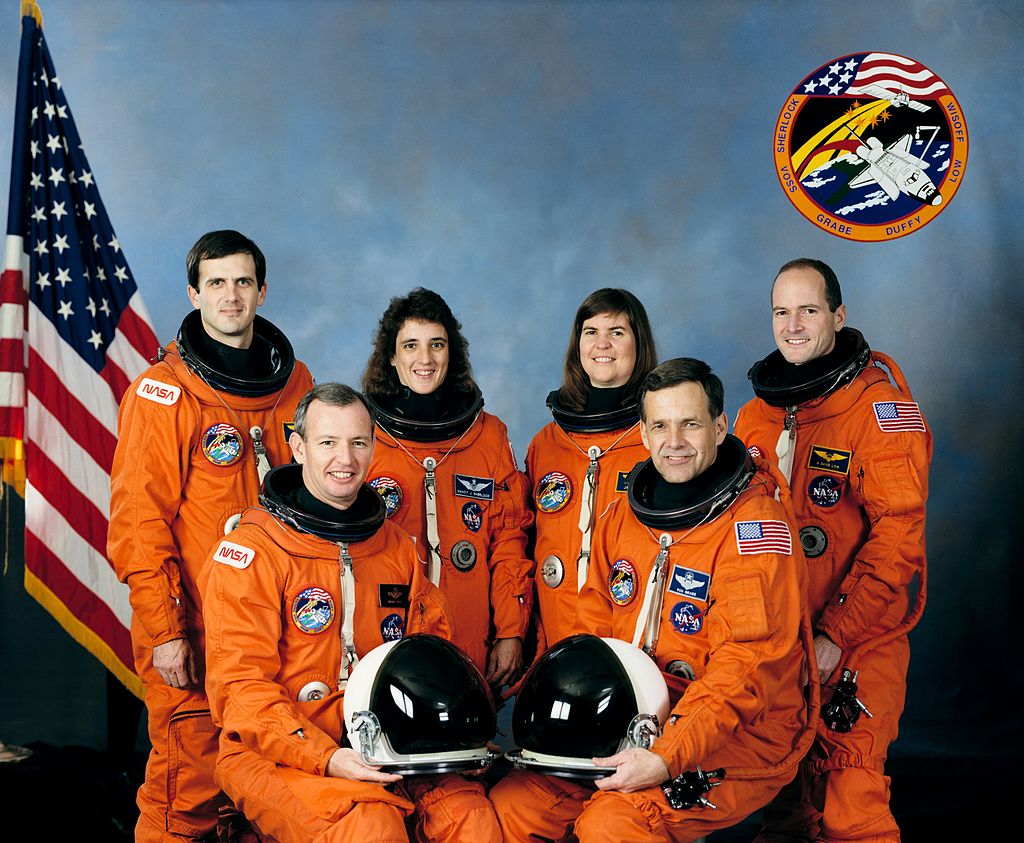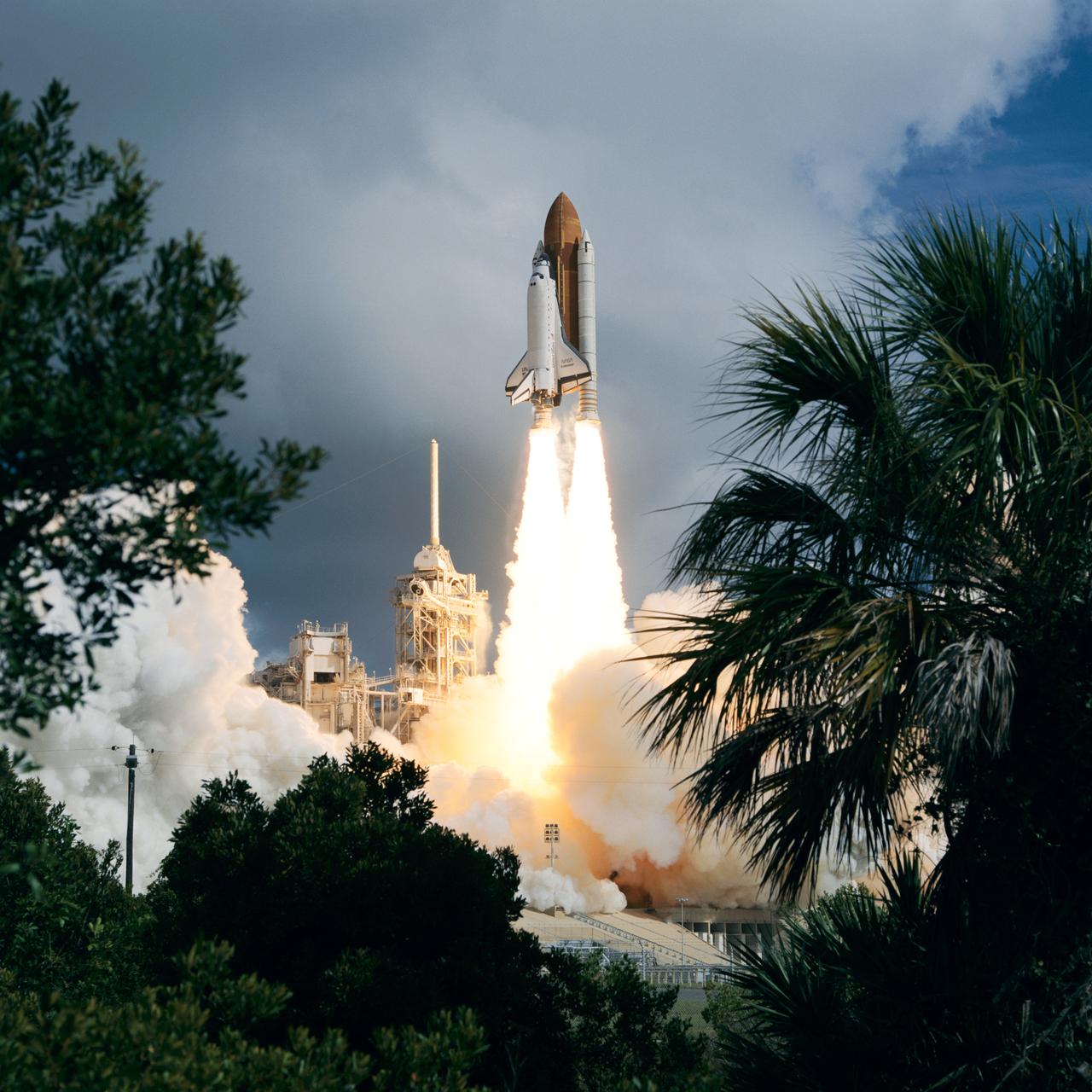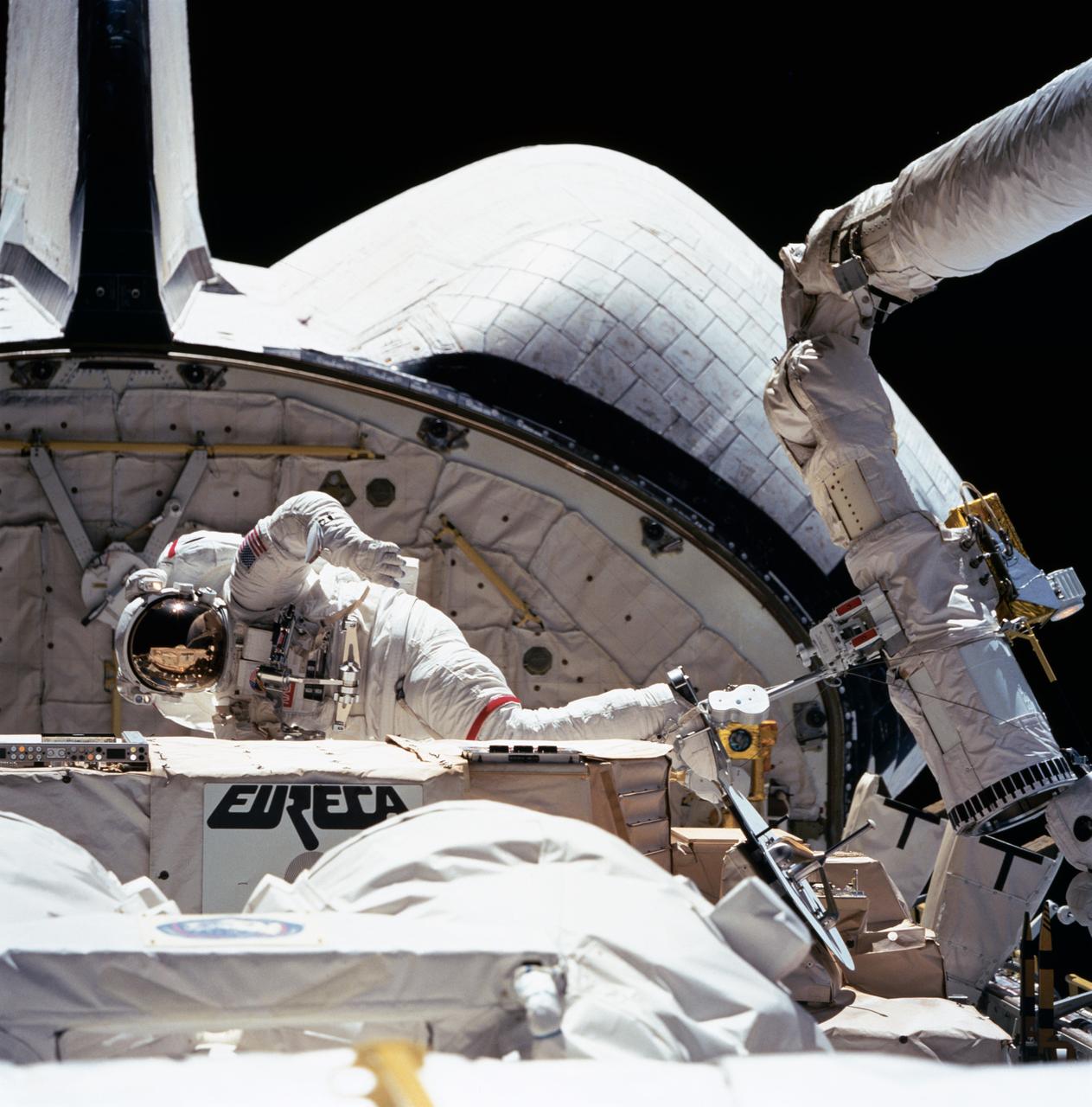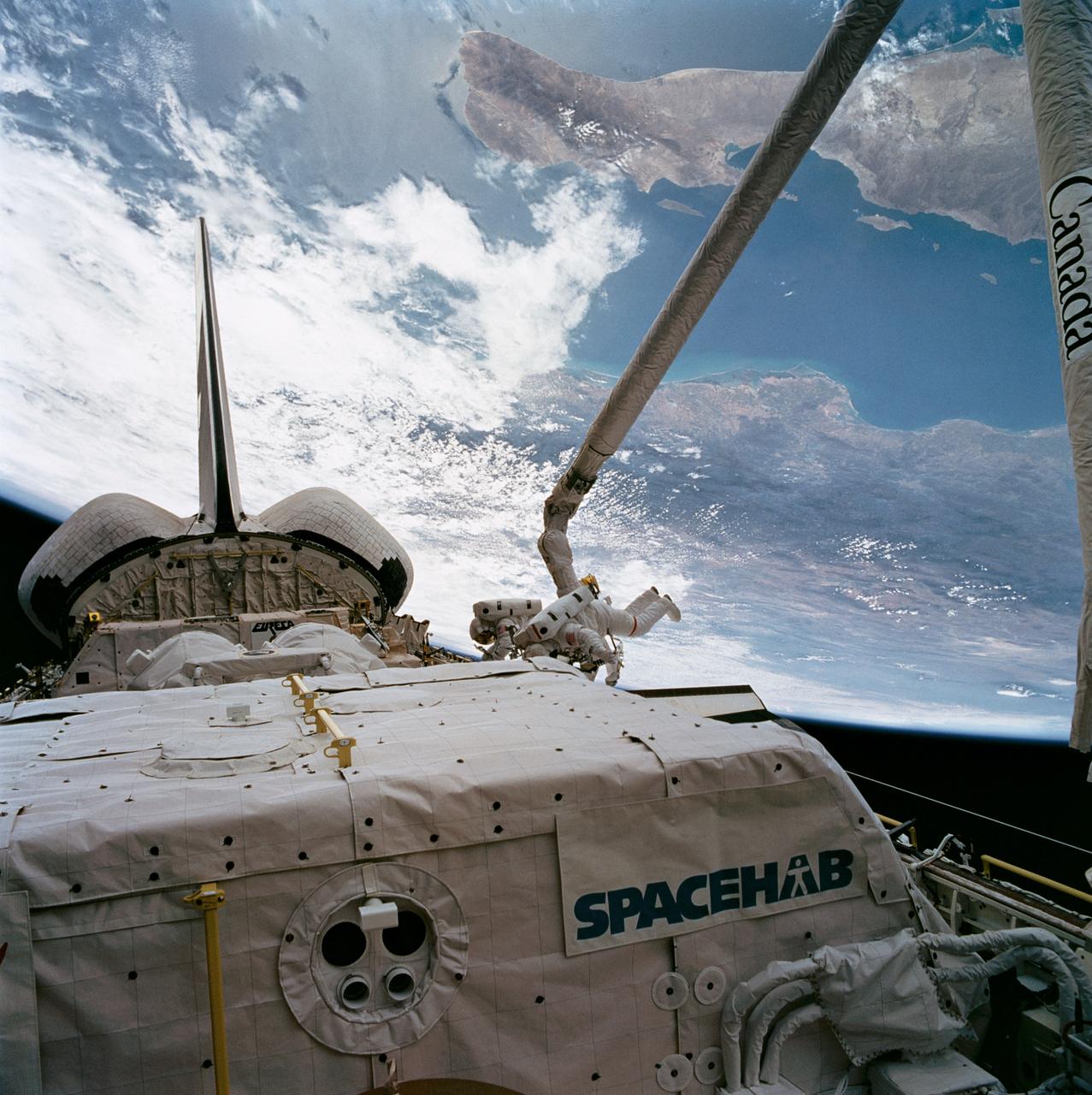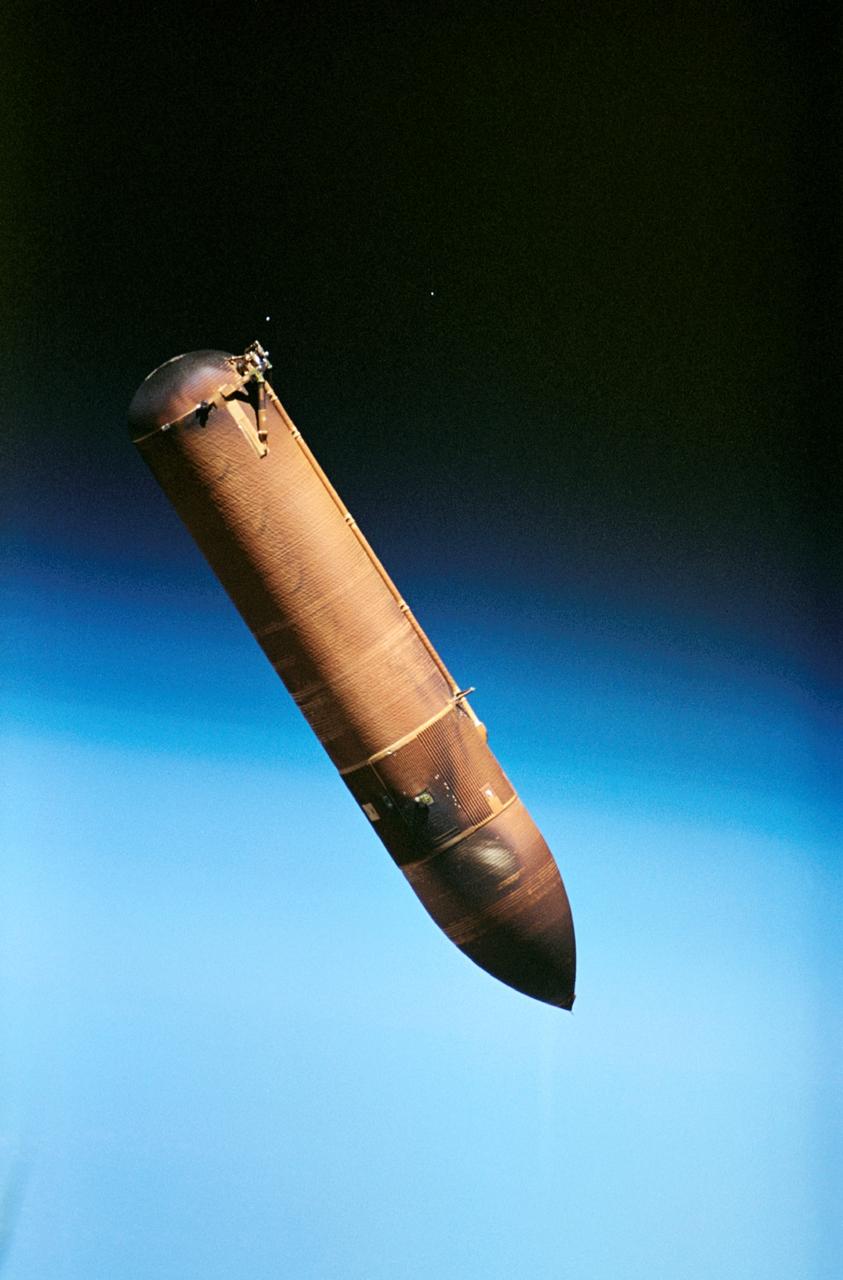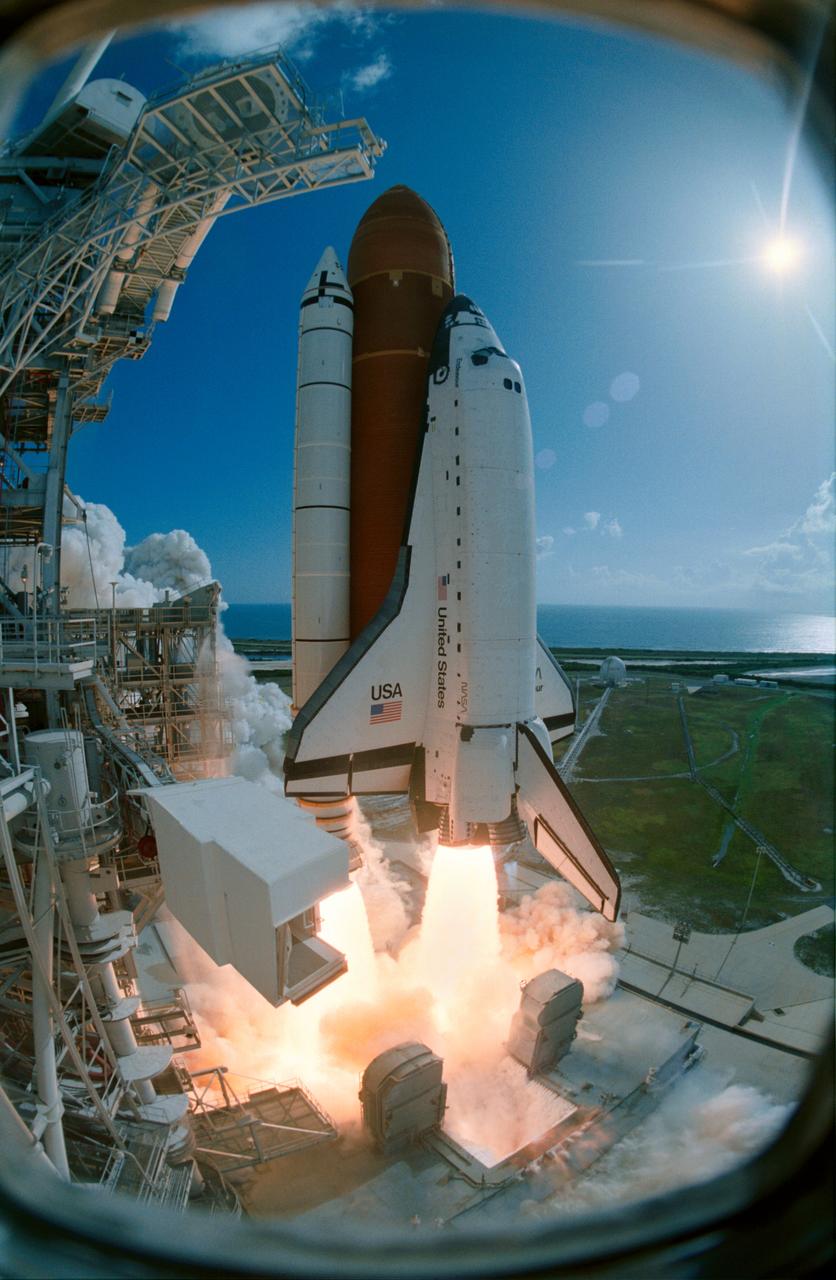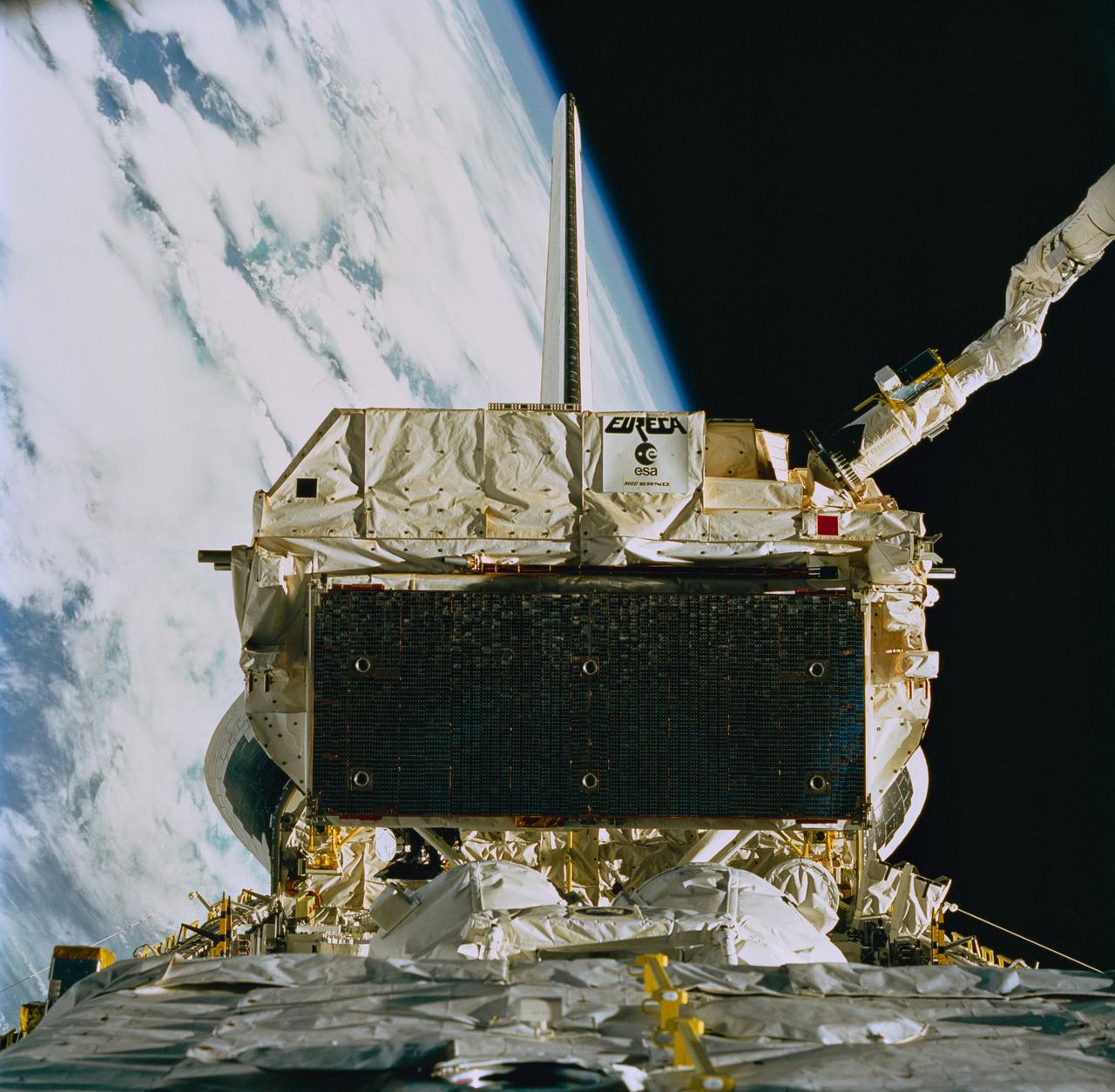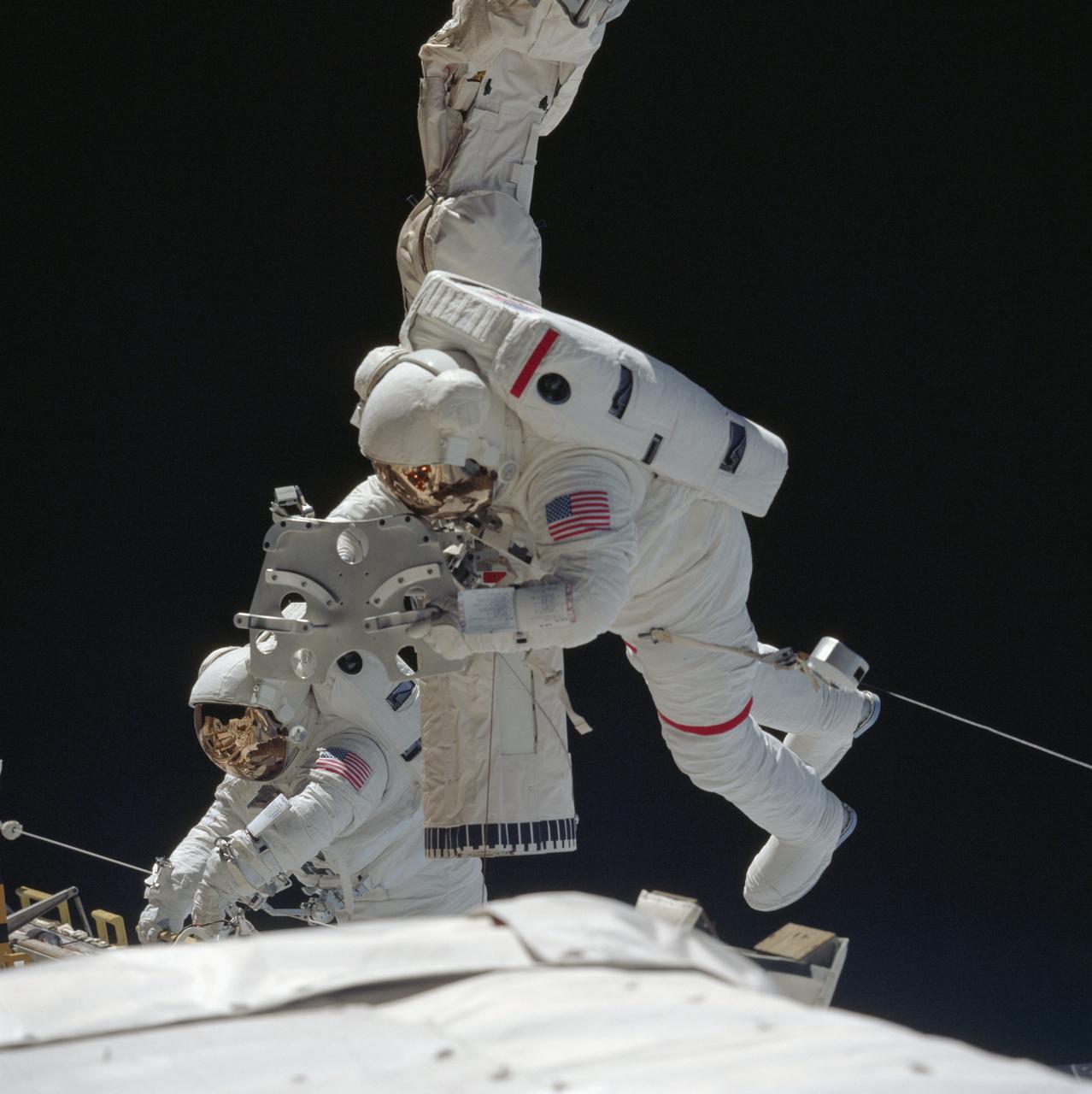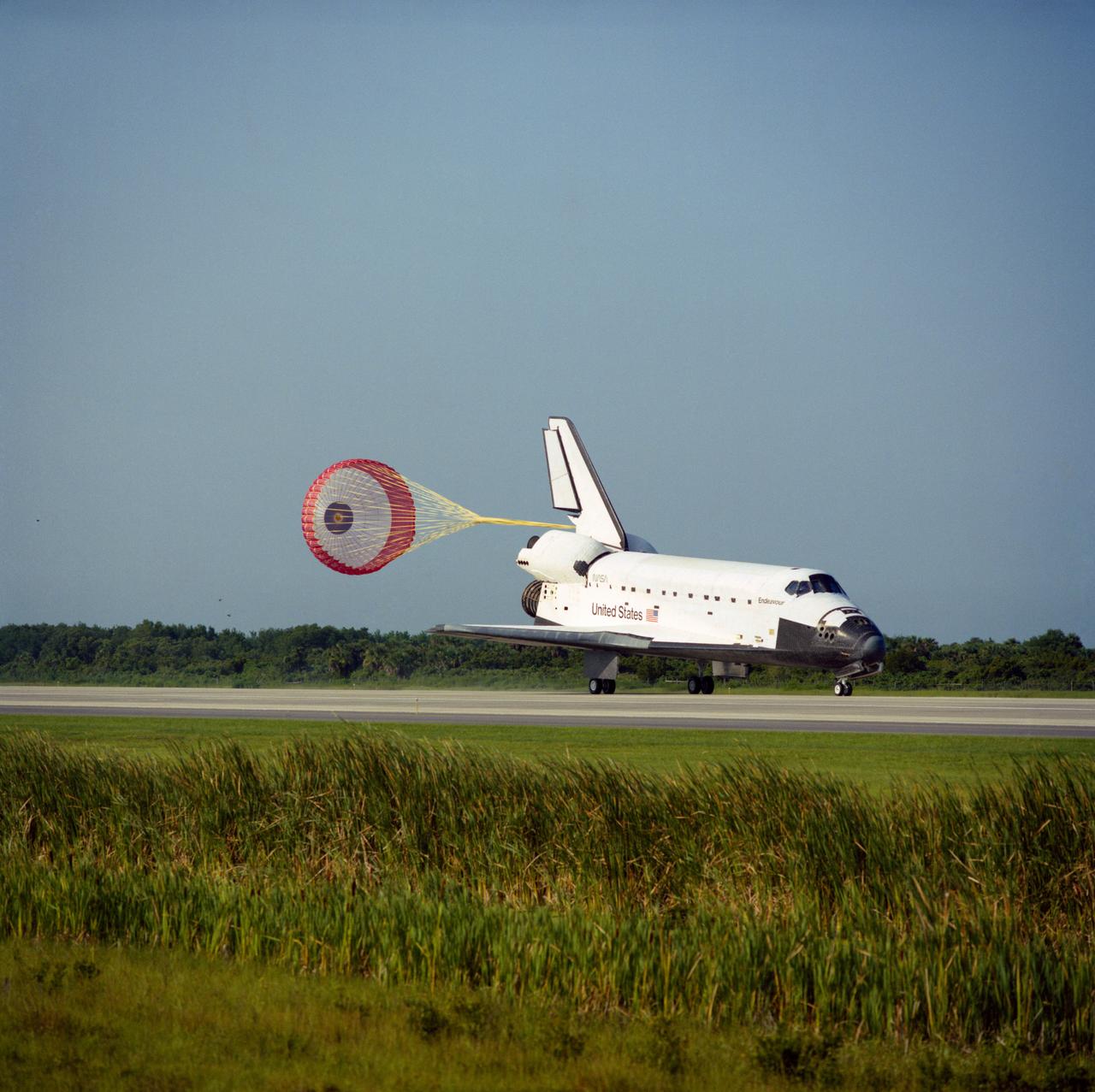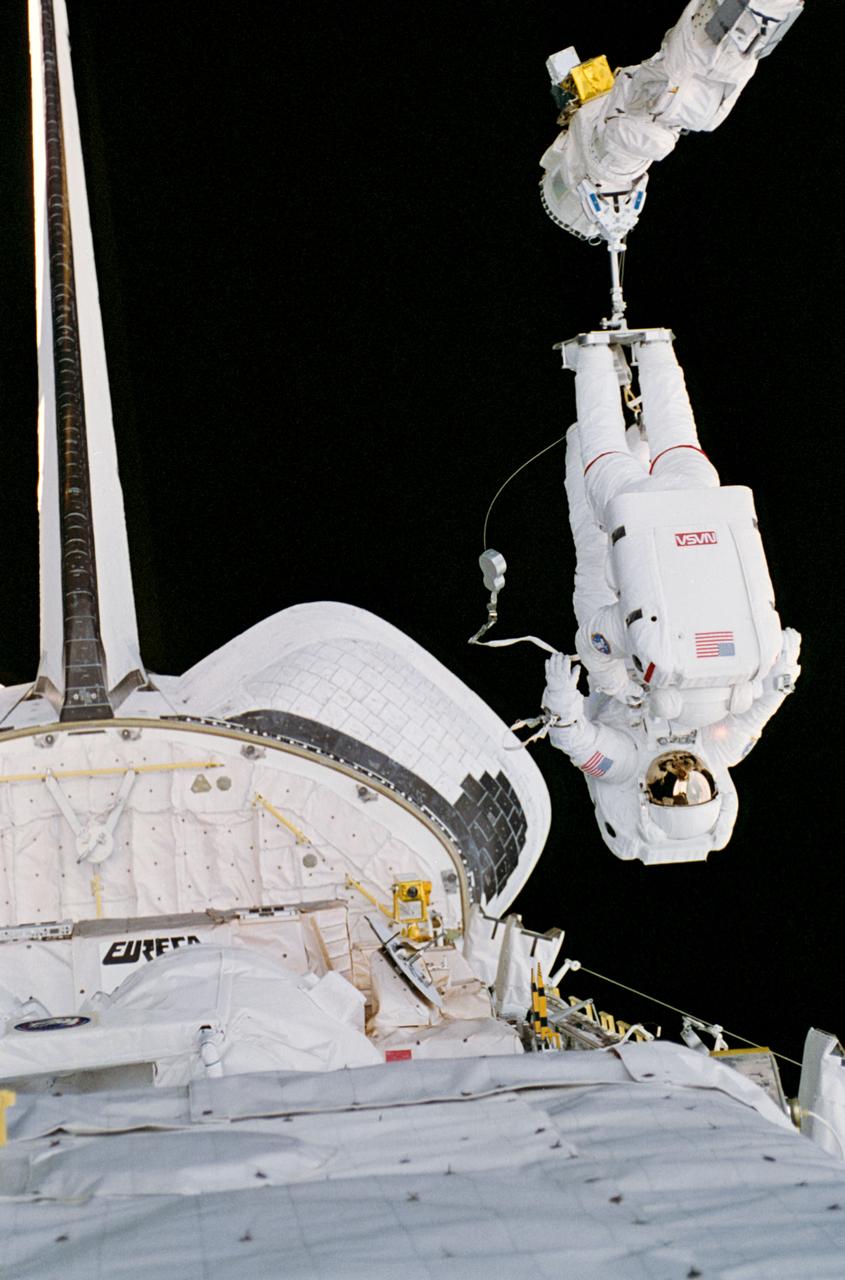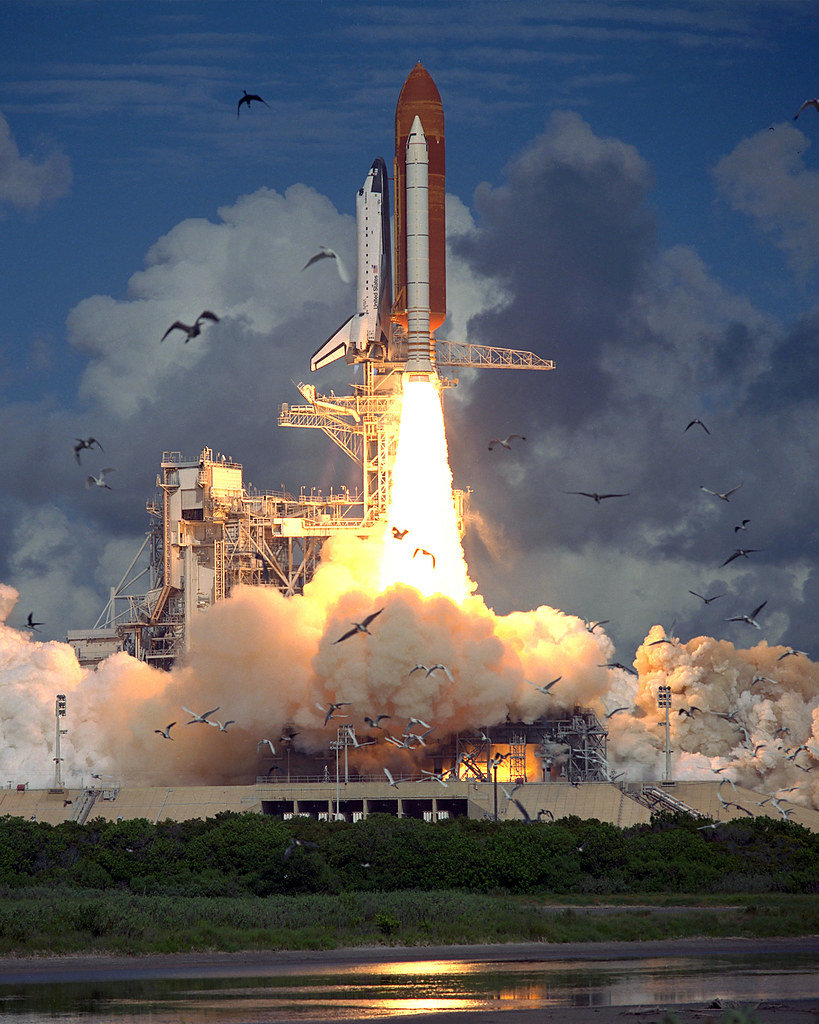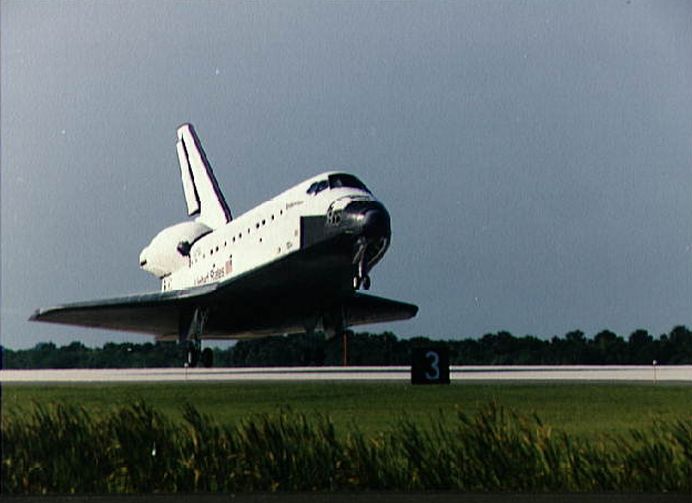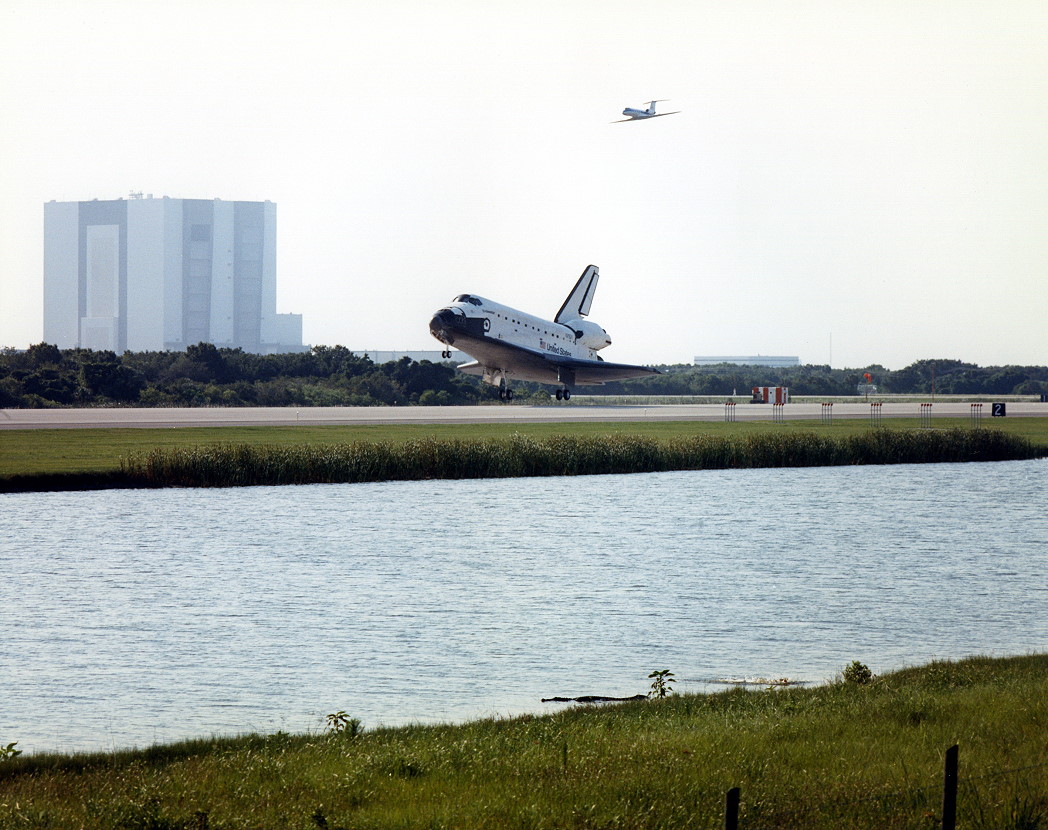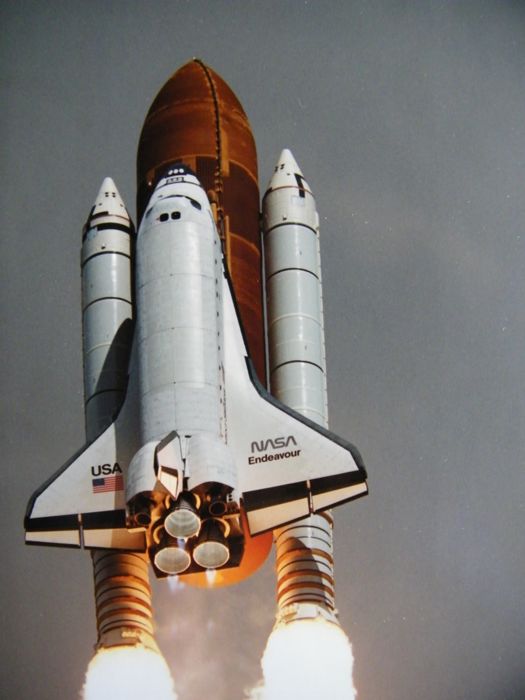STS-57 Fact Sheet
By Cliff Lethbridge

STS-57 — Endeavour
56th Space Shuttle Mission
4th Flight of Endeavour
Crew:
Ronald J. Grabe, Commander
Brian Duffy, Pilot
G. David Low, Payload Commander and Mission Specialist
Nancy Jane Sherlock, Mission Specialist
Janice E. Voss, Mission Specialist
Peter J.K. Wisoff, Mission Specialist
Orbiter Preparations:
Tow to Orbiter Processing Facility – January 19, 1993
Rollover to Vehicle Assembly Building – March 24, 1993
Rollout to Launch Pad 39B – April 28, 1993
Launch:
June 21, 1993 – 9:07:22 a.m. EDT. Launch was originally scheduled for mid-May, 1993 but was rescheduled to June to allow liftoff and landing in daylight. Scheduled June 3, 1993 launch was postponed to allow a changeout of the high pressure oxidizer turbopump on Endeavour’s Main Engine Number Two.
Concerns arose over a misplaced inspection stamp on a spring in the turbopump. The launch delay also afforded time to complete an investigation of a “big bang” heard at the launch pad following Endeavour’s arrival. The noise was attributed to a “settling” ball strut tie rod assembly inside a 17-inch liquid hydrogen line.
Launch attempt on June 20, 1993 was scrubbed at T-5 minutes due to poor weather at the launch site and at all three transoceanic abort landing sites. June 21 launch occurred as scheduled with no delays.
Landing:
July 1, 1993 – 8:52:16 a.m. EDT at Runway 33, Kennedy Space Center. Rollout distance was 9,870 feet. Rollout time was 67 seconds. Mission duration was 9 days, 23 hours, 44 minutes, 54 seconds. Landing occurred during the 155th orbit.
The mission was extended two days due to poor weather at the Kennedy Space Center. Following the landing, the STS-57 crew talked to the STS-51 crew aboard Discovery for a practice countdown at Launch Pad 39B. This was the first Shuttle to Shuttle crew communication since the STS-51D crew in orbit talked to the STS-51B crew at Launch Pad 39A in 1985.
Mission Summary:
This was the first flight of the commercial SPACEHAB pressurized laboratory, which effectively doubled the pressurized workspace available for astronauts to tend experiments. 22 experiments were flown in materials and life sciences and space station wastewater recycling.
The crew captured the European Retrievable Carrier (EURECA) orbiting science satellite deployed during STS-46. EURECA ground controllers were unable to successfully fold the craft’s antennas for stowage.
On June 25, 1993 astronauts Low and Wisoff spent the first portion of a 5 hour, 50 minute spacewalk manually folding these antennas. The remainder of the sole spacewalk of the mission was spent testing space station assembly techniques and procedures necessary for upcoming Hubble Space Telescope (HST) repair missions.
Payloads included 11 GAS experiments, Fluid Acquisition and Resupply Experiment (FARE) and Shuttle Amateur Radio Experiment-II (SAREX-II). Endeavour participated in the Air Force Maui Optical Site (AMOS) calibration tests, although no hardware was flown for this purpose.
SELECTED NASA PHOTOS FROM STS-57
